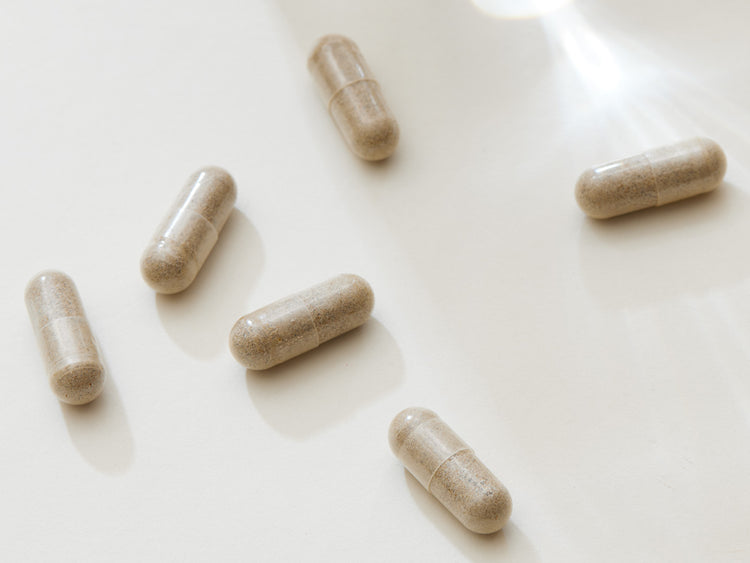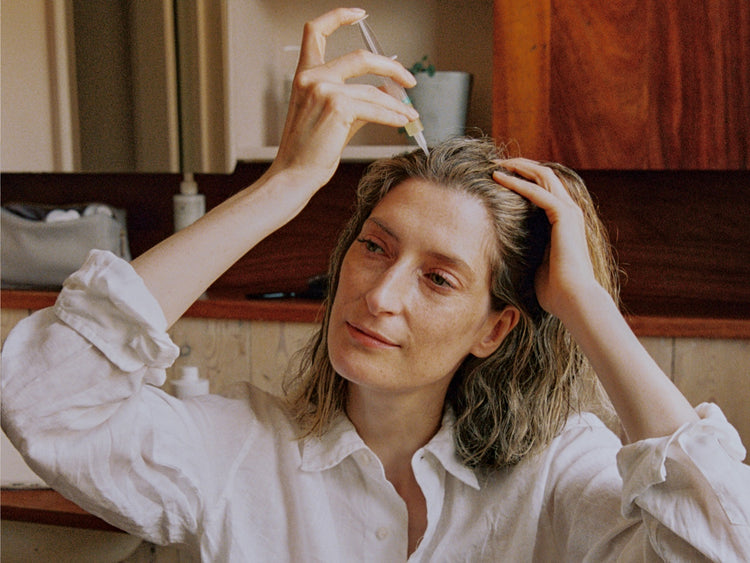The body goes through incredible changes during and after pregnancy –the scalp and hair included. While many people’s hair feels thicker and appears shinier during pregnancy, some experience the opposite. It’s also common to have increased hair loss a few months after giving birth. Typically the hair growth cycle is restored, but sometimes treatment might be necessary.
How does the hair growth cycle change during pregnancy?
During pregnancy – due to increased oestrogen and androgen levels – the typical hair shedding cycle is postponed, resulting in hair remaining in the growth (anagen) phase for longer. Many people experience rapid hair growth during this stage, as well as thicker, shinier strands.
How does the hair growth cycle change after childbirth?
Around 12 to 16 weeks after pregnancy, hair goes into a resting (telogen) phase and begins to shed. This is typically just part of the body returning to normal, as essentially all hair shedding was paused during pregnancy, so shedding finally restarts. Sometimes though, hair loss continues and hair becomes thinner than before pregnancy. Texture and quality changes are also common.
Aside from hormones, what other factors affect hair during and after pregnancy?
Nutrient deficiencies, lack of sleep, and elevated stress are normal after giving birth and these factors can also increase the possibility of hair loss.
Postpartum Hair Loss Prevention and Regrowth
During and after pregnancy, there are things you can do to lessen the effects of hair loss.
Diet: A nutrient-rich, balanced diet does wonders for your hair. Foods high in protein, biotin and vitamins A, B, C and D are especially beneficial for healthy follicles and stronger hair. If you are facing post-pregnancy hair loss, consider eating more of these foods: blueberries, spinach, lentils, walnuts, sweet potatoes, beans, eggs, chicken, beef and fish.
Styling habits: Reducing harmful styling habits can be helpful for hair loss as well. Decreasing your use of straighteners and curling irons can lessen the stress on your hair, as these tools often pull and dry out strands. Additionally, eschewing tight ponytails, slicked-back buns and tight braids for looser hairstyles can decrease strain on your follicles.
Stress: While stress is part of life, it’s especially unavoidable postpartum – a time of sleep deprivation, general new-parent anxiety and increased physical demands. Excessive hair loss typically occurs three to six months after a stressful event, so many people will experience hair loss well after the birth of their child. No matter your approach to stress-management, it’s important to practice self-care and prioritise your emotional and physical wellbeing.
If you are still dealing with hair loss six months after your pregnancy, consider taking our Hair Assessment or make an appointment for an in-person consultation to determine if the Harklinikken Method can help you gain back hair thickness, shine, luster, length and overall health.

Unsure where to start?
We only accept candidates who we believe we can help, which is why our online Hair Assessment is the best place to start. Based on your results, you will either qualify for immediate treatment or we will organize a consultation.






